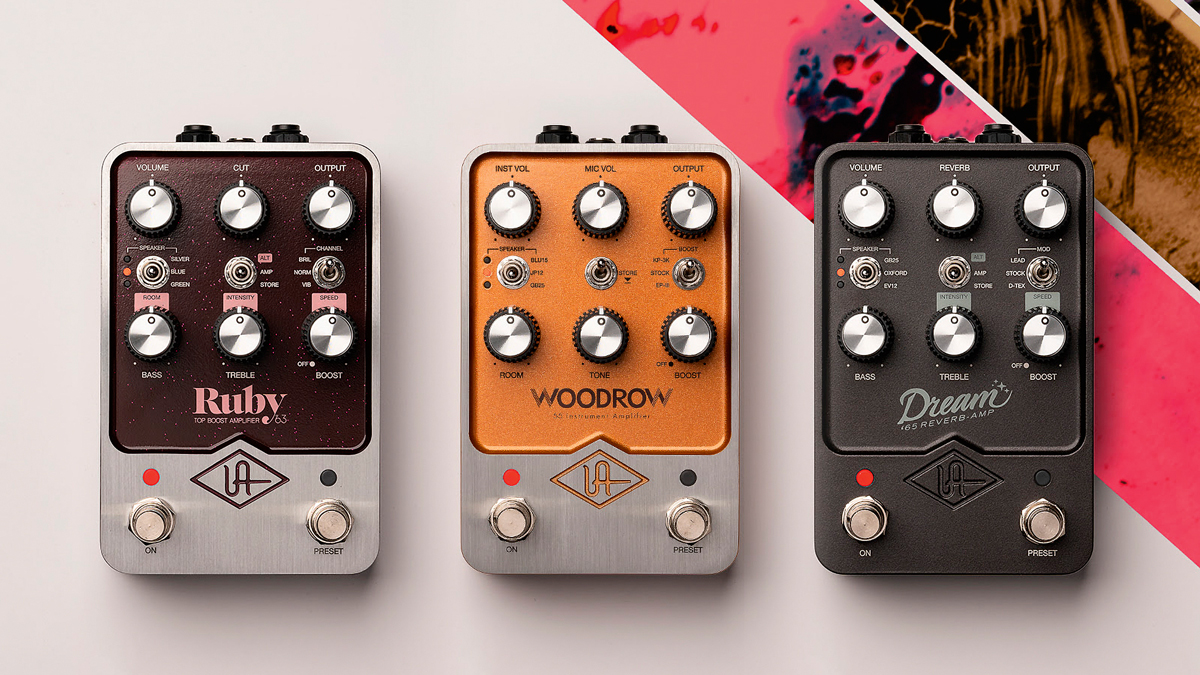Guitar World Verdict
If you want a range of amps, then there are plenty of modellers around, but many guitarists rely on just one amp. So if your favoured type is represented here, one of these is absolutely the best way to get that sound and feel in a convenient box for studio, home and stage use.
Pros
- +
Exemplary emulations of classic amps.
- +
Practical range of complementary speaker cabs.
- +
Flexible footswitching options.
- +
Preset library.
- +
Dream '65 is an excellent clean pedal platform.
Cons
- -
No headphone output or balanced outputs.
- -
App needed to change presets.
- -
No MIDI.
You can trust Guitar World
Following last year’s pedal debuts, Universal Audio’s UAFX range continues to grow with these new Amp Emulators, which the company says emulate the best vintage guitar amps of all time.
Each pedal represents one particular amp type: Woodrow ’55 Instrument Amplifier is based on Fender tweed amps from the ’50s; Dream ’65 Reverb Amplifier represents the later black-panel Fenders with an emulation of the Deluxe Reverb; and Ruby ’63 Top Boost Amplifier channels our homegrown Vox AC30.
Providing various stereo and mono options, each pedal offers the actual amp emulation plus a choice of six speaker cabinet emulations – you get three as shipped, but registering the pedal entitles you to another three. Each pedal also has three toggle-switched variations on the sound that only become active on turning the Boost switch from fully anticlockwise.
A single preset can be instantly recalled with the right-hand footswitch, while the other footswitch accesses the Live mode, which gives you the sound determined by the current positions of knobs and switches. If you want to make a preset that is an instant snapshot of the knobs and switches, you do it with a simple flick of the Store switch.
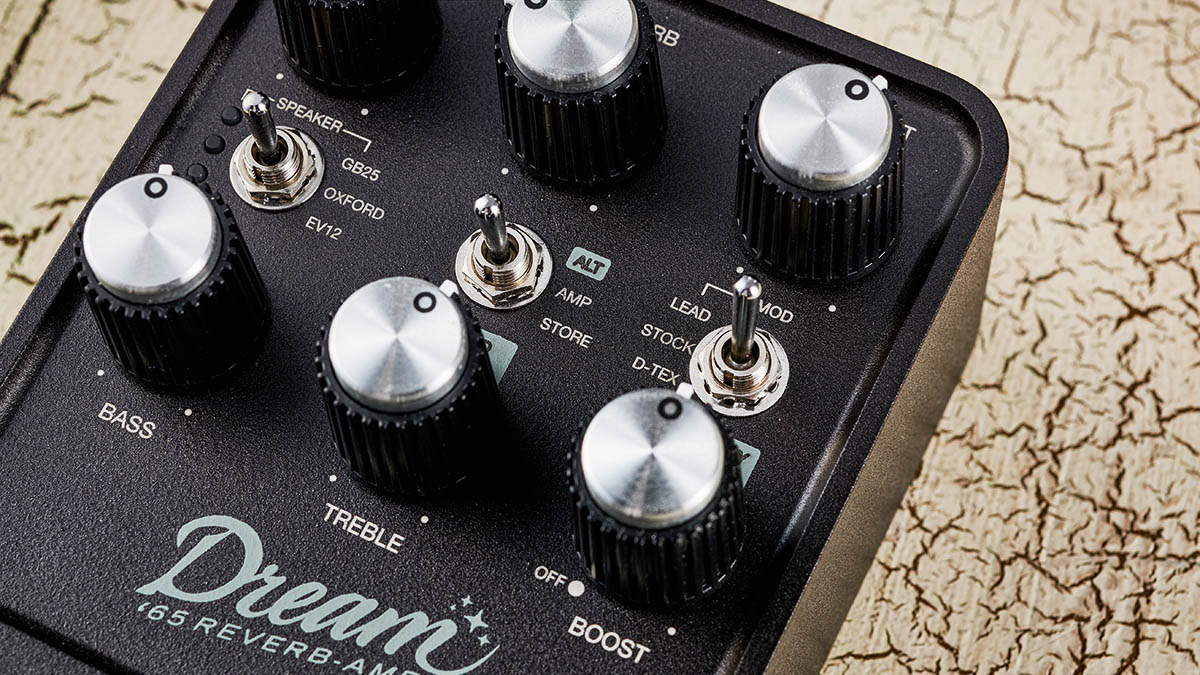
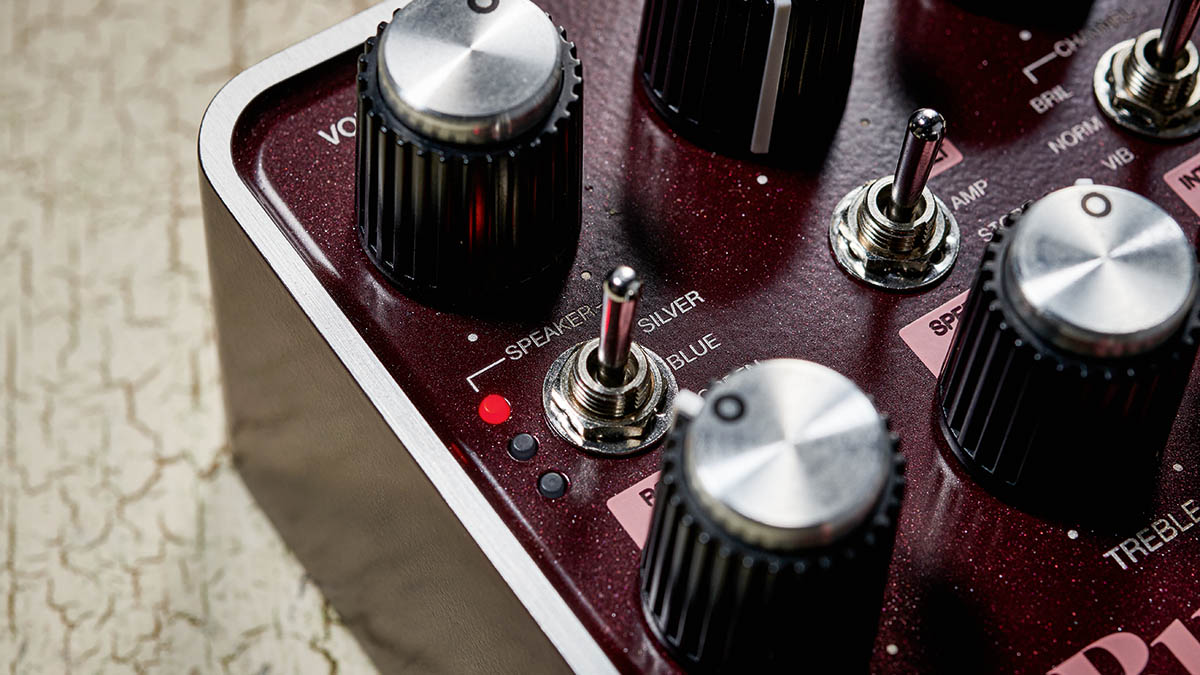
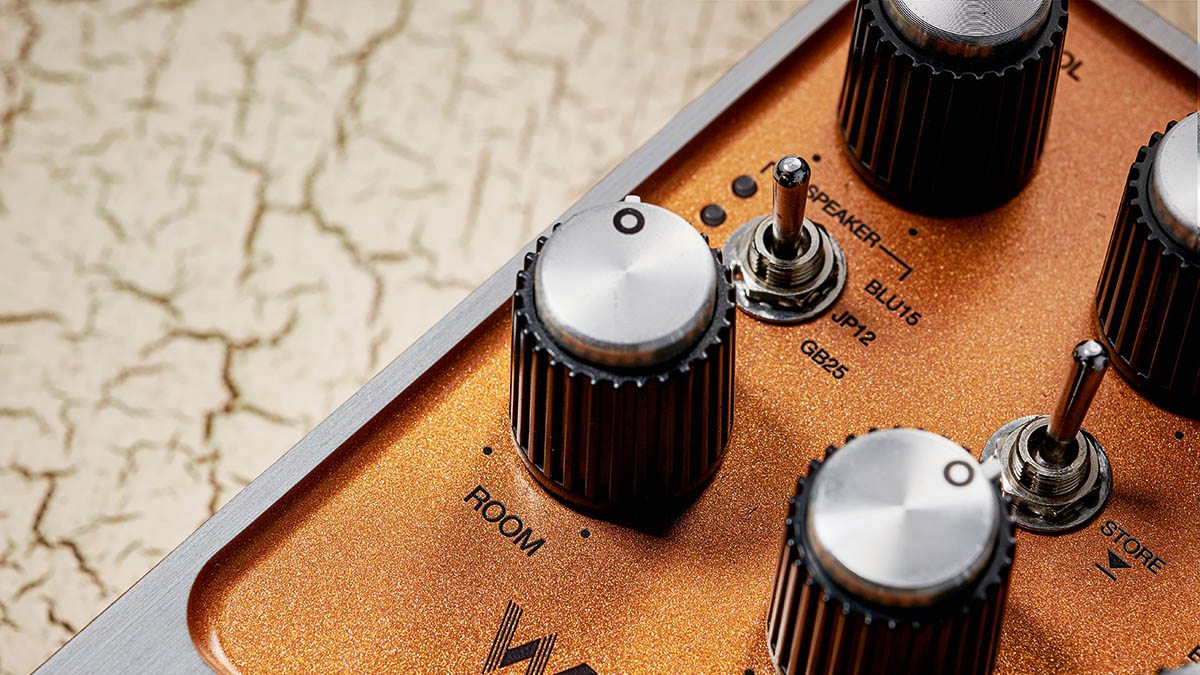
There is another source of presets via the UAFX Control mobile app for iPhone and Android, which lets you beam a preset into the pedal. There are a bunch of them out there already with meticulously dialled-in sounds to suit a range of musical scenarios.
Some are factory presets, while some have been created by pro guitarists including Tim Pierce, Nels Cline and Cory Wong, among others. The app has other functions, too, like allowing you to configure different footswitch assignments, such as having a footswitch to turn vibrato on and off.
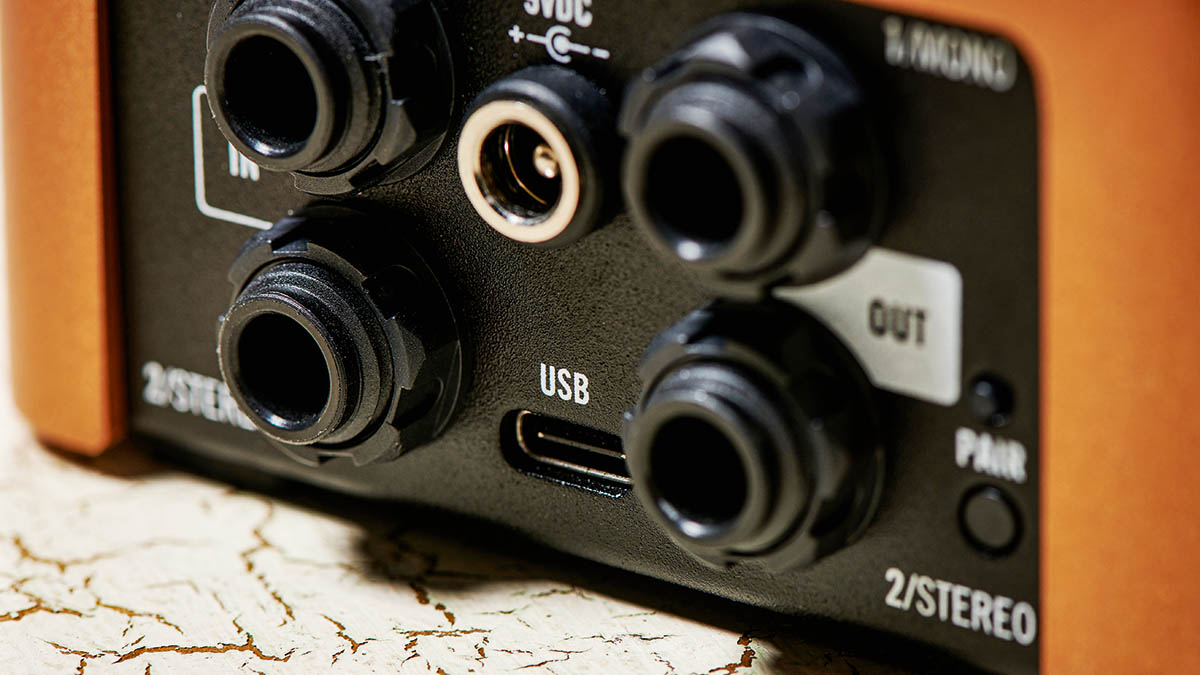
While the pedals are ideally placed to be a substitute for a real amp for recording or for sending a signal to FOH or an FRFR speaker for onstage use, they can also be used with your own amp.
Playing through all three pedals is a revelation as they react organically with all of the push-and-pull response of the nominated amp
It’s easy to disengage the cab simulation, and there’s a setup that allows you to use the four-cable method whereby the pedal becomes an alternative preamp to your own amp – this lets you easily switch between your amp’s preamp and two variations of the pedal’s sound.
Playing through all three pedals is a revelation as they react organically with all of the push-and-pull response of the nominated amp, as well as delivering its sound with exceptional accuracy. They are the closest emulations to the real thing that this reviewer has experienced.
Things never sound dry and sterile as the Dream ’65 has a superb spring reverb emulation, while the other two non-reverb amps get a Room knob that puts air around the sound with ambience derived from the UA Ox Amp Top Box for an authentic sense of space.
Woodrow ’55
With no alternative functions for any of its knobs, the Woodrow has the simplest interface of the three pedals. It represents a two-channel amplifier so you get Instrument Volume and Mic Volume knobs that can be used individually or blended. EQ tasks are taken care of by a single Tone knob that tweaks the top-end, although prior to any of that, the choice of speaker has a massive influence on the tone on all three pedals.
There’s a choice of three types of boost: a stock clean preamp boost; one based on the preamp of a Korg SDD-3000 (beloved of The Edge); and that old favourite, the preamp from an Echoplex EP-3, which can really get things screaming. Yes, that Neil Young lead sound is entirely within your grasp.
Ruby ’63
Ruby ’63 offers three channels, two of which are based on a ’63 Top Boost amp. The Normal channel, however, is actually modelled on a non-TB ’61 amp complete with a Rangemaster treble boost dialled in with the Boost knob in true Brian May and Rory Gallagher style, delivering some instantly familiar classic tones.
Authentically for this channel, there’s a Cut control for treble, but if you use either of the Top Boost channels you get the additional Treble and Bass knobs.
The Brilliant channel comes with an EP-3 preamp to add some extra wallop, while the Vibrato channel gets clean boost and has Speed and Intensity controls for the tremolo to dial in some authentic vintage throb.
Dream ’65 Reverb Amplifier
The Dream ’65 Reverb Amplifier is the Vibrato channel of a black-panel Deluxe Reverb in a box, so you get Volume, Bass, Treble and Reverb knobs plus Speed and Intensity for the tremolo as Alt parameters.
There are some solid clean tones here that make this an ideal partner for your pedals but plenty of targeted drive, too. The three options are for a stock amp with a clean preamp boost for the purists or a choice of two amp modifications.
Lead offers more midrange warmth, and D-Tex, described as the SRV modification, is great if you want an extra bit of gain and singing midrange. The spring reverb really hits the spot here, and the speaker options are well chosen – we really liked the 4x10 option for a Fender Super vibe.
Verdict
These are excellent pedals that not only sound exactly like the amp they are emulating but offer the tactile feel of playing through one. While other pedals may offer more amps, concentrating the DSP power on a single amp is completely justified if it offers this much attention to detail.
That approach also facilitates an interface that mimics the original amp and makes it easy to dial in exactly what you need without diving into menus.
There are things that stop these scoring a solid 10, though – missed opportunities, mainly – but there are workarounds for them: the lack of a dedicated headphone feed can be addressed with a Y-cable, for instance.
If you want a range of amps, then there are plenty of modellers around, but many guitarists rely on just one amp. So if your favoured type is represented here, one of these is absolutely the best way to get that sound and feel in a convenient box for studio, home and stage use.
Specs
Woodrow '55
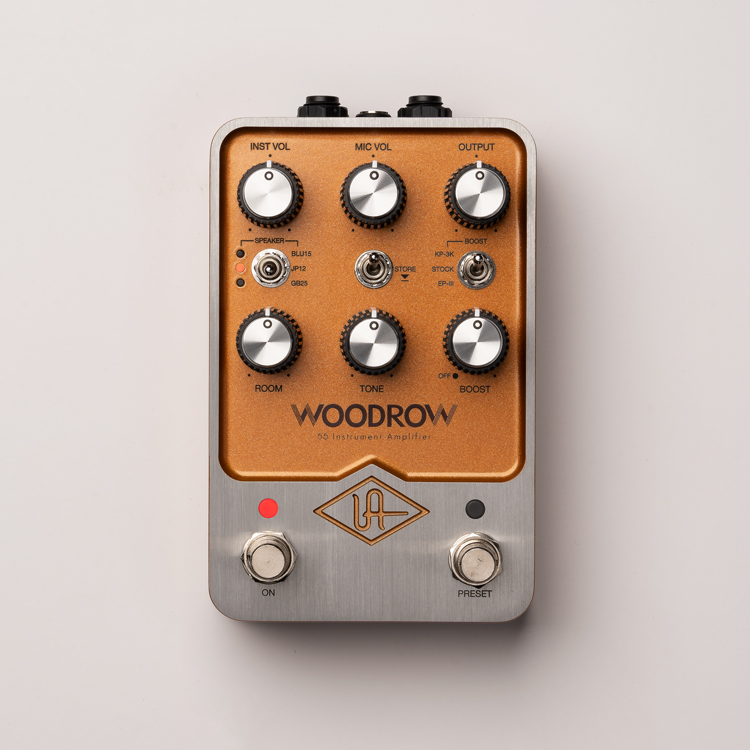
- PRICE: $399/£339
- ORIGIN: USA
- TYPE: Amp emulation pedal based on a tweed Fender amp
- FEATURES: True analogue bypass
- SPEAKER OPTIONS: 15W Celestion Blue, Jensen P12R, 25W Celestion Greenback, Marshall 4x12 with Celestion V30 speakers, Fender 4x10 Bassman cab with Jensen P10R speakers, Fender 1x12 cab with vintage JBL D-120F speaker
- CONTROLS: Inst Vol, Mic Vol, Output, Room, Tone, Boost, Speaker switch, Store switch, Boost switch, Pair switch, Preset footswitch, Bypass footswitch
- CONNECTIONS: Standard inputs (1/Mono, 2/Stereo), standard outputs (1/Mono,
2/Stereo), USB - POWER: 9V DC adaptor (not supplied) 400 mA
- DIMENSIONS: 92 (w) x 146 (d) x 63mm (h)
Specs
Ruby ‘63 Top Boost Amplifier
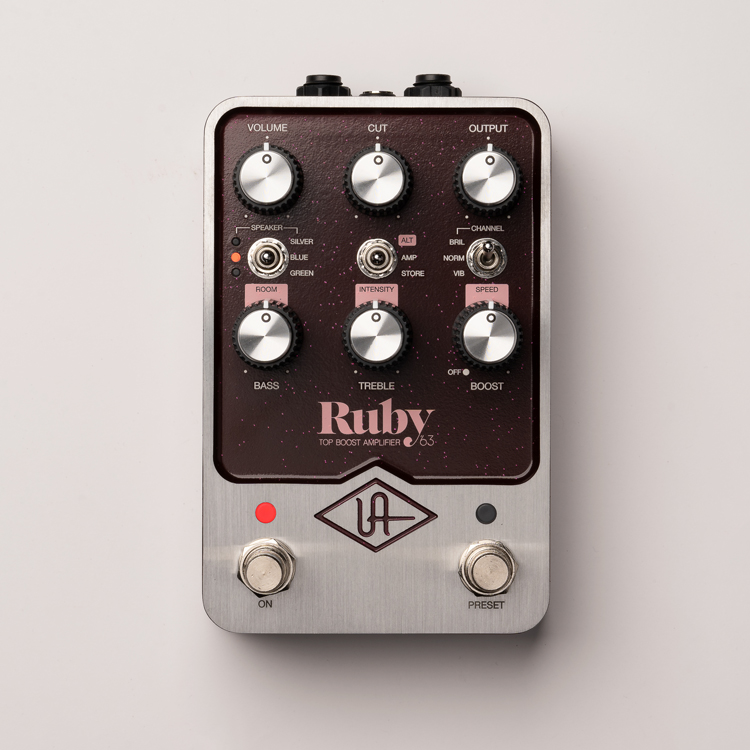
- PRICE: $399/£339
- ORIGIN: USA
- TYPE: Amp emulation pedal based on a Vox AC30
- FEATURES: True analogue bypass
- SPEAKER OPTIONS: 15W Celestion Silver Bulldog speakers, Celestion Blue Bulldog speakers, Modern Celestion G12Hs speakers, 1x12 AC15 cabinet with Blue Bulldog speaker, 2x12 Matchless cabinet with Celestion G12Hs, 2x12 Two-Rock cab with Celestion Golds
- CONTROLS: Volume, Cut, Output, Bass (Room), Treble (Intensity), Boost (Speed), Speaker switch, Alt/Amp/Store switch, Channel switch, Pair switch, Preset footswitch, Bypass footswitch
- CONNECTIONS: Standard inputs (1/Mono, 2/Stereo), standard outputs (1/Mono,
2/Stereo), USB - POWER: 9V DC adaptor (not supplied) 400 mA
- DIMENSIONS: 92 (w) x 146 (d) x 63mm (h)
Specs
Dream ’65 Reverb Amplifier
- PRICE: $399/£339
- ORIGIN: USA
- TYPE: Amp emulation pedal based on a black-panel Fender amp
- FEATURES: True analogue bypass
- SPEAKER OPTIONS: Vintage Celestion Greenback, Oxford 12K5-6, 200W Electro-Voice EVM12L, Two-Rock 2x12 extension cab with Celestion G12-65s, Vintage 1966 4x10 Fender Super Reverb cab with original CTS speakers, Vintage 1968 2x12 Fender Twin Reverb cab w/original JBL D-120F speakers
- CONTROLS: Volume, Reverb, Output, Bass, Treble (Intensity), Boost (Speed), Speaker switch, Alt/Amp/Store switch, Mod switch, Pair switch, Preset footswitch, Bypass footswitch
- CONNECTIONS: Standard inputs (1/Mono, 2/Stereo), standard outputs (1/Mono,
2/Stereo), USB - POWER: 9V DC adaptor (not supplied) 400 mA
- DIMENSIONS: 92 (w) x 146 (d) x 63mm (h)
- CONTACT: Universal Audio
Trevor Curwen has played guitar for several decades – he's also mimed it on the UK's Top of the Pops. Much of his working life, though, has been spent behind the mixing desk, during which time he has built up a solid collection of the guitars, amps and pedals needed to cover just about any studio session. He writes pedal reviews for Guitarist and has contributed to Total Guitar, MusicRadar and Future Music among others.
“If you’re a young guitar player, that’s money well spent”: John Mayer names the pedal he thinks every young guitar player should consider buying
“An effortless way to customize your TONEX pedals for the stage”: IK Multimedia answers players’ prayers and gives its best-selling TONEX units their biggest upgrade to date – a dedicated editor
